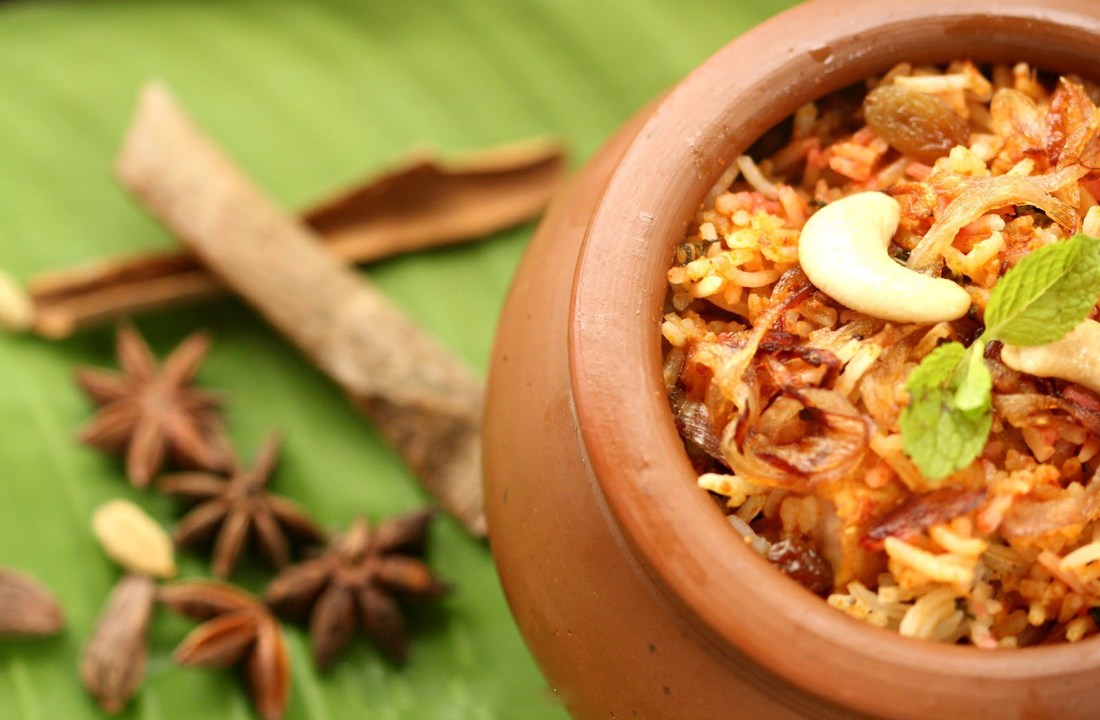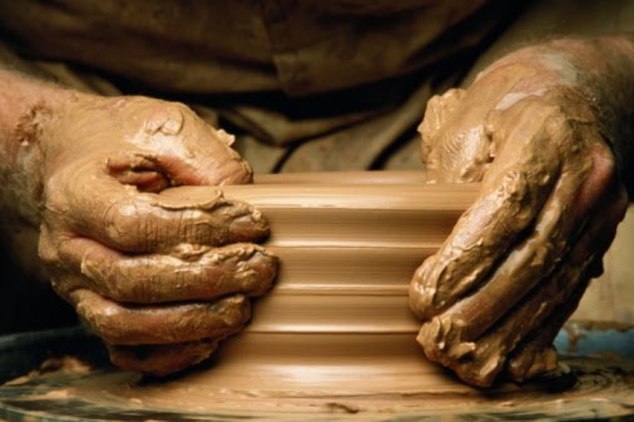|
Birbal’s khichdi did take an eon to cook, but for sure, it was the tastiest one in town!
Sitting at the dingiest corner of old Lucknow, watching the dum biryani’s eternal rendezvous with a 100 year old hearth chanced me a perfect analogy of the popular Akbar-Birbal tale. Intrigued to the extent that my stomach forgot it needed fuel, I set forth to decipher what was taking a simple mixture of rice and meat, ages to turn into a cuisine. An eighty two year old chef, a ‘khansama’ as they call him, working there for the longest possible part of his life that his 80+ old memory could recall, replied to my curious inquiry very matter-of-factly in his impeccable syrupy urdu (which I am translating for obvious reasons!), “this dum (steam cooking) takes time to happen. You see that handi (pot)? It first tastes the ingredients, measures the moisture, weighs the nutrition and then uses all this information to cook for you. All this takes time. Sit at ease; Have a cutting chai till your biryani gets ready.” So it was not the flame, it was indeed the pot that tendered me the yummiest biryani of my life! What takes exactly 2 whistles to cook in my pressure cooker, took half a day to emerge from the earthen pot. But what we have been scraping out of the cooker is nowhere even close to what alighted on our plates from the handi! That day, I leanrt two things; 1. nobody can make better biryani than the 82 year old khansama, and 2. all that cooks, is not vessel! My respect for earthen pots has escalated manifold... Not just for the love of biryani but for the amazing benefits of cooking it hoists. Slow and steady wins the race This old axiom befits clay vessel-cooking. It is slow, and steady too. My first hands-on with a clay pot was although not as grueling as I thought it to be, nevertheless a firm test of patience. From the time I put it on the stove (unfortunately I could not get a wooden hearth for action) till I served the biryani for lunch, I could have finished 4 laps of triathlon! Every conducting material carries thermal inertia: ‘the degree of slowness with which the temperature of a body approaches that of its surroundings’. Metals have it very low while clay pots have it high. Unlike metals, which are super-quick in conducting heat, earthen-wares take their own sweet time. They take up heat slowly and distribute it uniformly throughout the vessel, trickling across every fleck of the ingredients. Slow heat dispersion cooks food slowly, yet steadily and uniformly making sure no part of your cuisine is under-cooked or over-cooked. What goes in, stays in The 2 most vital parts of any food commodity are its 1. nutrient content, and 2. moisture content. Earthen or clay vessels are extremely porous in nature; and porosity goes complementary to circulation. Due to their high permeability quotient, the cooking mechanism is propagative and distributive. Heat and moisture inside stays circulated and evenly distributed to every ingredient. It is not surprising that preparations from a clay vessel are very supple and ductile, to say the least. Slow and consistent heat keeps the food, especially meat and fibrous foods, tender and soft, at the same time retaining their nutrition and quality intact. Try out a biryani or a pulao (for the veggies pinching their eyebrows on this biryani-dominated blog!) out of a clay pot and may be another from your nonstick; the remarkable difference in taste, aroma and succulence cannot go unnoticed! The ultimate acid test Not always do diamonds cut diamonds; we need a saw at times. Clay due to its alkaline nature, is the best material to combat highly acidic foods. The acidity of meals from clay vessels is easily kneaded while cooking and the food stays soft on our digestive system. Better than butter Again, porosity of clay locks moisture and grease inside till the end. It keeps oil well spun with the food and prevents it from evaporating. Which means, the need to addition of any extra oil or butter is slashed . You will be surprised to see your oil rations plummeting in a few weeks with clay vessels at your service! Burnign the midnight oil Clay pots work harder and longer than anyone else. But rarely will you be served with a burnt curry! Our biggest worry while cooking is exactly this; a moment away from sight, the food in even our best non-stick pans burn out in anger! But clay promises to never let you down. Clay particles absorb heat to bind to each other but do not let any organic material to stick. Simultaneously, circulating heat waves through the pores prevent overheating of surface and prevent charring. Like the proverbial candle, being clay isn’t easy too! Quality isn’t expensive; it is priceless. Buying my first clay pot after the inspirational encounter with mr.khansama was an experience; and shocking too. “Something that can bring out the best a biryani could ever be, cannot be so inexpensive!” I chuckled to myself as the polite potter packed my pot carefully in newspaper. Earthen-wares are the easiest to manufacture because they do not need any expensive establishments or labour. Potters are everywhere and so are their skills. Usually clay vessels and containers are found at any potter’s hub and can even be made-to-order according to your specifications. They are economical and a break now and then does not tweak your budget much. Yes, we need to follow a bit of procedure to temper a clay pot before use but once done, you have a friend for life! Earthen for our Earth Needless to say, nothing can be greener than clay! It is ubiquitous, natural, environment friendly and absolutely recyclable. Teflon coatings and even aluminum for that matter are extremely harsh for not just our surroundings but our tummies too. What goes around, comes around We are not just surrounded by the 5 elements, but we are the five elements. Whether it is food cooked in an earthen vessel or water stored in one, our internal is constantly co-existing with the external, in the most utilitarian way. You cannot go wrong choosing the naturals because they are sustainable, healthy and consistent. When it comes to our food, it is not just what we eat but how it is cooked, that affects our system. Clay is one of the most versatile materials to mould into and the friendliest one to practically all kinds of food we eat. We have an entire street named after the potter’s community here in Bangalore. Yet I ended up at a local fair to pick up my first clay pot, blame it on my poor sense of nativity! Approach your local potters to pick your pieces. It is always a better idea to help artists directly than through retailers. Glazed or unglazed, you are sure to get your desirable vessels and a big smile to thank you for your helping hand! I could almost taste birbal’s khichdi in my mind after my first morsel of biryani from the clay pot I picked. While my seventh standard moral science period imparted profound moral injunctions from Akbar-Birbal stories, this experience taught me an entirely different lesson from Birbal's khichdi escapade: Give back to the planet what it gives you, and more than often, cooks for you!
Ashwin Byndoor
6/13/2018 06:20:29 am
Very Well Written. Food cooked in earthen pots are indeed the best to taste. Made me remember the authentic Mangalorean fish curry my granny makes in these earthen pots...
Snehmita
6/14/2018 11:55:11 am
Very relishing.Something very simply written but deeply engrossing. Comments are closed.
|
AVOID FRAUD. EAT SMART.AuthorDietitian & Nutritionist Dr. Nafeesa Imteyaz. ArchivesCategories |
- Home
- Written Testimonials
- Consult
- Clinics
- Blogs
-
Diet & Nutrition
- Diabetes Reversal
- IVF IUI not needed for PCOS PCOD Infertility
-
Medical Nutrition
>
-
Disease & Conditions
>
- Infertility | PCOS
- Diabetes Mellitus
- Cholesterol
- Hypothyroid
- Kidney Problems
- Hypertension
- Cardiovascular Diseases
- Liver Diseases
- Gastro intestinal disorder
- Cancer
- Metabolic Disorders
- Orthopedic Disorders
- Eating Disorders
- Dietary Recall
- Weight Record Filled By Clients
- Online Payment Transaction Details
- Online Clients Weight Check Form
- Our Program Package Service Charges
- Weight Record 2017 Clients
- Measurements sent by Clients
- Terms & Conditions Of Payment
- Thanks. Your Form is Submitted
- Video Testimonials
- Lifestyle & Wellness
- Lifestyle & Wellness Blog
- Allergy & Intolerance
- Weight Loss / Gain
- Weight Loss / Slimming Blog
-
Disease & Conditions
>
- Life Cycle Nutrition >
- Sports Nutrition >
- Integrity in Nutrition
- Knowledge Centre
© COPYRIGHT 2022. ALL RIGHTS RESERVED. FRST HEALTHCARE PVT LTD.
Dr. Nafeesa Imteyaz of First Eat Right clinic, is the Best Dietitian Nutritionist in Bangalore. Best Dietitian Nutritionist in Pune. Best Dietitian Nutritionist in Hyderabad. Best Dietitian Nutritionist in Chennai. Best Dietitian Nutritionist in Mumbai. Best Dietitian Nutritionist in Delhi. Best Dietitian Nutritionist in Kolkata.




 RSS Feed
RSS Feed